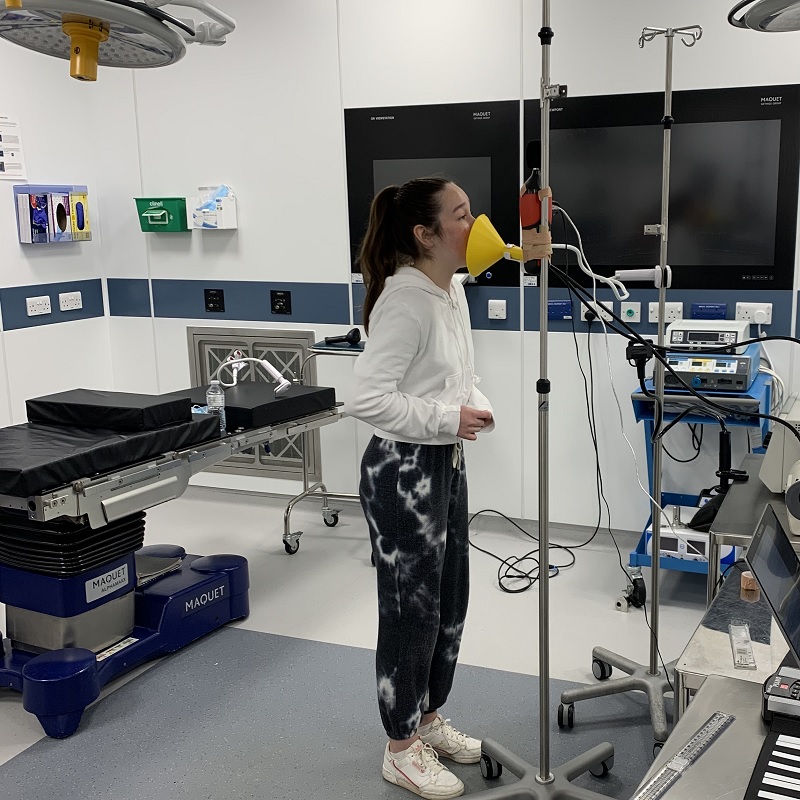A new Interface Focus issue examines the role of aerosol transmission in the spread of the SARS-COV-2 virus. We spoke to the organiser to find out more.

During the COVID-19 pandemic, airborne transmission of the SARS-COV-2 has emerged as an important route of the spread of the virus. We spoke to the organiser of a new Interface Focus issue, Dr Julian Tang, about the importance of this form of transmission and of having policies to control its spread in indoor spaces.
1. Please can you introduce the issue and tell us what it’s about
Throughout the COVID-19 pandemic, there has been a fierce debate about how SARS-COV-2 is transmitted. Initially the emphasis was on handwashing, but this was clearly not enough to control the spread of the virus. The tragic deaths of many London bus drivers, who were not provided with face masks but who just washed their hands, suggested early on that this intervention alone was insufficient.
In contrast, the early universal masking by populations in places like Hong Kong and Taiwan where there were very few cases of COVID-19 with hardly any deaths, indicated that this virus was not predominately transmitted by touch.
A number of virologists (working in diagnostics and epidemiology) and physicians (working in infectious diseases and infection control), and engineers (who work in aerosol science) strongly suspected that this virus was airborne - mostly transmitted via breathing in virus aerosols produced from the nose and mouth of those infected - particularly when people are just talking to each other, just a few feet apart.
Most other respiratory viruses also share this transmission route - though this has been previously called ‘droplet transmission’. Yet if such ‘droplets’ can be inhaled, they are actually behaving as aerosols.
This issue brings together a collection of papers that highlight the importance and role of aerosol transmission for the SARS-CoV-2 virus. It also shows how developments in this area have led to insights into the transmission and infection risks, public health responses, and related societal and economic impacts.
2. How can our knowledge of the aerosol transmission of SARS-COV-2 help inform intervention policies within workplaces, schools and other public places?
This realisation had massive implications as to how the virus should best be controlled, i.e., with the use of face masks, social distancing, and improved ventilation - in all crowded indoor spaces, including public transport, schools, offices, supermarkets, cinemas and concert venues.
Whilst the use of face masks can be controlled by individuals themselves, it is most effective when practiced universally; similarly, for social distancing to be effective, everyone needs to observe it. Intervention policies have therefore been necessary to ensure widespread compliance. Organisations could also decide to improve their indoor ventilation to help combat SARS-COV-2 aerosol transmission. However, this can entail a significant financial cost and necessitate the alteration of a building’s infrastructure.
As COVID-19 becomes more endemic and seasonal, people will make choices that best help themselves - those with vulnerable medical conditions, like asthma, diabetes, chronic heart, lung or kidney disease, or cancer, etc. may choose to avoid crowded indoor areas, and wear masks indoors or on public transport.
3. What are the avenues for future research in this area, and how can we apply these findings to help combat future pandemics?
Future SARS-COV-2/COVID-19 research will extend beyond the realm of aerosol transmission and infection control - to include rapid pathways for the development, trialling and licensing of vaccines, monoclonal antibodies and antivirals - as well as ways to increase their uptake by the public.
Once such pathways are set up, specific responses will depend very much on the nature of the next pandemic or international epidemic pathogen - though over the last 40 years (going back to the early 1980s when HIV/AIDS emerged) they have so far all been viruses.
The next pandemic pathogen is most likely to be another virus, but we should be better equipped to deal with this.
Image credit: An aerosol measurement configuration used to capture data on aerosol particles that are exhaled when individuals breathe, speak and sing. See the paper ‘Comparing aerosol number and mass exhalation rates from children and adults during breathing, speaking and singing’. Interface Focus. DOI 10.1098/rsfs.2021.0078
Keep up to date with the latest issues of Interface Focus by signing up for content alerts, and browse previous theme issues on the journal website.




